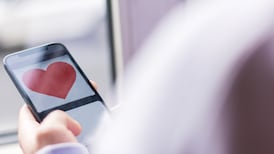We are constantly warned about the danger of sun damage to our skin. And while we may be conscious of protecting children’s delicate skin, when it comes to ourselves, we seem to be like smokers who refuse to quit. But what if we could actually see the damage the sun was doing to our face and body?
My trip to the Venus medical clinic in Dundrum, Dublin, is an enlightening one.
The clinic's medical director, Dr Peter Prendergast, uses the Vectra M3 3-D Imaging System, a new technology whereby three cameras take pictures of your face and neck without make-up and build a 3D image.
Minimally invasive
Prendergast uses the images to show what clients would look like should they opt for any of the “minimally invasive aesthetic treatments” offered at the clinic, but they are also used to analyse conditions such as spider veins, pigmentation, acne and sun damage. I’m usually quite pale in winter and one of those people who scoffs at the sun in summer as I “tan” easily without burning. However, the evidence I see at Venus medical reveal enough sun damage to make me think twice about applying sun screen under my factor 15 make-up each morning.
Sun damage causes 70 per cent of skin ageing, but the characteristics we associate with older skin are also due to the natural ageing process, genetics, poor diet, smoking and lack of exercise. “Tanning and freckling are the skin’s way of protecting you,” says Prendergast. “With ageing the skin changes: we develop lines and wrinkles, uneven pigmentation and laxity in the skin. Sun damage is a contributory factor to all of these.”
He recommends that everyone wears a sunscreen (minimum factor 30) daily that protects from both UVA rays, which cause skin ageing, eye damage and skin cancer, and UVB rays which are cancer-causing. He advises people to avoid the sun between 11am and 3pm and to wear a hat and wraparound glasses in summer to maintain a youthful appearance.
Pale skin and freckles
Many of the clinic’s clients are Irish women in their late 20s who are unhappy with their pale skin and freckles. From a purely aesthetic point of view, there are many increasingly sophisticated treatments available which work to “resurface” the skin.
While we are familiar with glycolic peels, dermabrasion and microdermabrasion, Prendergast says lasers are becoming the method of choice for skin resurfacing because of the precision they offer: “The gold standard is CO2 laser or fractional C02, which uses a scanner to scan across the face and peels thousands and thousands of tiny little dots leaving spaces between the dots, and so the risk of complications is lower and the recovery time is quicker.”
Skin cancer
Aside from the cosmetic reasons for protecting our skin is the much more serious issue of skin cancer and sun safety. The Irish Cancer Society and the Irish Skin Foundation work hard to get this message across to the public through sun-smart campaigns, but it seems to fall on deaf ears as soon as weather forecasters utter the words "high pressure".
There are more than 100 forms of skin cancer, of which the best known are malignant melanoma, basal cell carcinoma and squamous cell carcinoma.
According to the Irish Cancer Society, there are more than 10,000 cases of skin cancer in Ireland every year, of which 90 per cent are caused by UV from the sun or sunbeds. The majority of these cases are treatable if caught early enough.
Gratuitous exposure
Dr Patrick Ormond, a consultant dermatologist at St James's Hospital and the Hermitage Medical Clinic in Dublin, says sun damage due to gratuitous exposure is essentially "self harm".
There are two types of sun exposure: “acute sun exposure – sunbathing and sunburning – that can be related to malignant melanoma and basal cell carcinoma; and chronic sun exposure caused during normal activities, such as walking, working and golfing, which are associated with all forms of skin cancer”.
“With acute sun damage, the sunburn is doing a lot of damage very quickly but also if you are alive for 70 years and you’re getting a little bit of radiation every day, things start to take their toll,” he says.
Ormond says people who are susceptible to changes in the skin, such as people with a family history of skin cancer or people with moles, need to check their skin once a month in order to keep track of changes.
The characteristics to look out for are: “A: Asymmetry; B: the Border; C: Colour (more than three colours); D: Diameter (if it is more than 5mm); E: Evolution (changes in the appearance); F: funny-looking; and G: rapidly growing.”
See your doctor
Ormond advises anyone who is worried about changes in their skin to see their GP first. “My advice is that you should go to see your own doctor. You will be seen urgently in both the public and private system if your doctor gives the correct information. . . The evidence that private mole mapping is of use in the general public is very poor. It is useful in people who are at high risk. I don’t think it is of any benefit to a person off the street.
“A trained dermatologist may do mole mapping as part of a full skin examination,” he says.
His advice when it comes to sun exposure is simple and clear: “Be sensible in the sun. Enjoy it. But enjoy it sensibly: don’t sunbathe and don’t sunburn.”
See venusmedical.ie, cancer.ie, irishskinfoundation.ie










